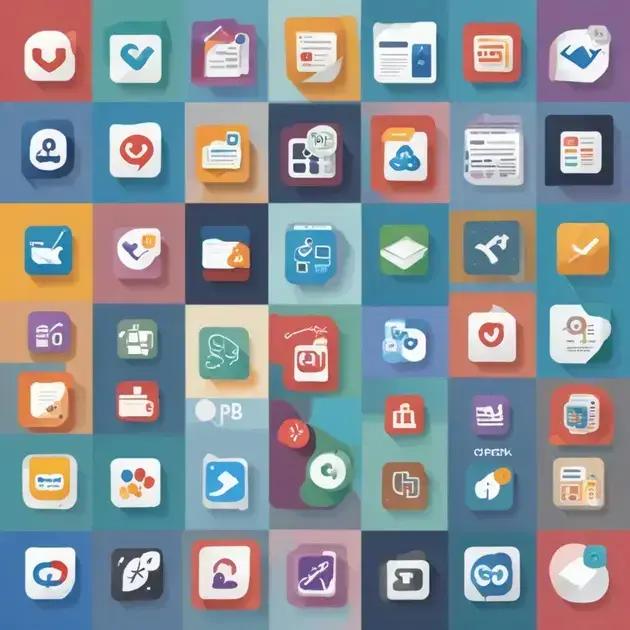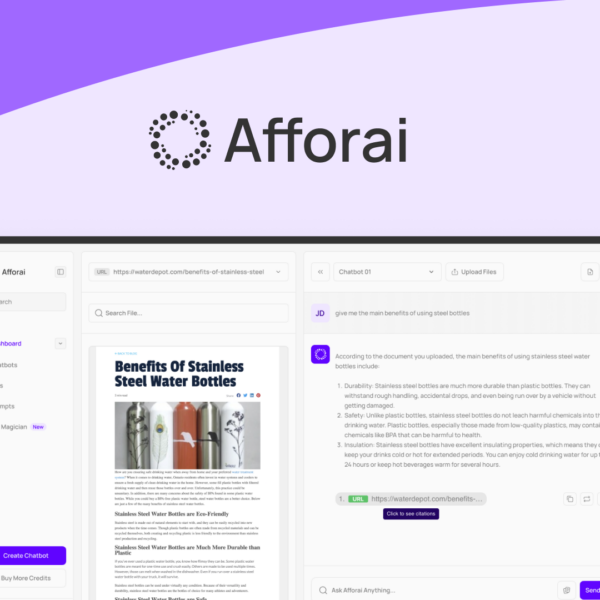Good business apps are essential tools that enhance productivity, streamline communication, and automate tasks within teams. Selecting the right apps based on specific needs, ensuring user-friendliness, and integrating them into workflows can lead to significant improvements in efficiency and collaboration.
Good business apps are essential tools for modern enterprises looking to enhance productivity and streamline operations. With the right apps, businesses can manage projects, improve collaboration, and tackle everyday tasks more efficiently. In this article, we will delve into what makes a good business app, recommend top options, and share tips on how to implement them effectively into your organization.
What Makes a Good Business App?
What Makes a Good Business App? A good business app should prioritize user experience and functionality. When considering an app for your business, it’s crucial to evaluate its core features, ease of use, and how well it integrates with your existing tools. Here are some key aspects to consider:
1. User-Friendly Interface
The best business apps have a clean and intuitive interface. Users should be able to navigate through the features without extensive training. The quicker the learning curve, the faster your team can adapt to the tool.
2. Essential Features
A good business app should include essential features that cater to your team’s needs. For instance, communication tools, project management functionalities, and file sharing capabilities are common requirements in many businesses. The app must align with your daily operations to maximize its impact.
3. Integration Capabilities
Integration with other tools is vital. A good business app should work seamlessly with your existing software, such as CRM systems, email platforms, and productivity suites. This helps avoid data silos and enhances workflow efficiency.
4. Security Measures
Data security is paramount. Ensure that the app follows strict security protocols to protect sensitive information. Look for apps that offer encryption and regular updates to safeguard against vulnerabilities.
5. Support and Updates
A good business app should come with reliable customer support and regular updates. This ensures you receive assistance when needed and the app evolves to meet changing market demands.
Top Good Business Apps for Small Businesses

When it comes to finding the top good business apps for small businesses, several options stand out due to their functionality and user-friendliness. Here are some noteworthy applications that can make a significant difference in your daily operations:
1. Trello
Trello is a popular project management tool that uses boards, lists, and cards to help teams organize and prioritize tasks. It’s easy to use and offers customization options that can fit any business’s workflow.
2. Slack
For team communication, Slack is a powerhouse. This messaging platform allows for real-time conversations, file sharing, and integration with other tools. It can enhance collaboration and keep everyone on the same page.
3. Zoom
In today’s digital world, Zoom has become essential for video conferencing. It provides high-quality video calls, webinars, and virtual meetings, making it easier to connect with clients and team members remotely.
4. QuickBooks
For financial management, QuickBooks is a leading accounting software that helps businesses track expenses, manage invoices, and prepare for tax season. It simplifies financial processes, allowing business owners to focus on growth.
5. Asana
Asana is another excellent project management tool that helps teams plan, organize, and track work. It supports various project types, enabling better team alignment and productivity.
Choosing the right apps depends on your specific needs. Consider trial versions before committing, as they can greatly enhance your business efficiency and communication.
How Good Business Apps Improve Productivity
How Good Business Apps Improve Productivity is a key consideration for any business looking to enhance its efficiency. Implementing the right applications can transform the way teams work together and manage their time. Here are several ways good business apps contribute to increased productivity:
1. Streamlined Communication
Good business apps often include communication tools that allow team members to message or video call each other instantly. This reduces the time spent in meetings and encourages quicker decision-making.
2. Task Management
Business apps like Asana or Trello help organizations keep track of tasks and deadlines. By assigning tasks within the app, team members can easily see what their responsibilities are, leading to improved accountability and progress tracking.
3. Automation of Repetitive Tasks
Many business apps have automation features that handle repetitive tasks, such as scheduling, invoicing, and data entry. This frees up employees to focus on more strategic activities that require critical thinking.
4. Enhanced Collaboration
Collaboration tools within business apps promote teamwork by allowing employees to easily share documents, give feedback, and brainstorm ideas in real time. This fosters creativity and equips teams to tackle projects collectively.
5. Data Insights
Good business apps often include analytics features that provide valuable insights into performance metrics. These insights help businesses identify areas that need improvement and understand customer behavior, informing better strategic decisions.
All these features combined lead to a more efficient and productive work environment. As businesses leverage good apps, they can see not only improved task completion rates but also higher employee satisfaction.
Choosing the Right Good Business App for Your Team

Choosing the Right Good Business App for Your Team is crucial for enhancing productivity and collaboration. With so many options available, here are some important factors to consider when selecting the best app for your needs:
1. Identify Your Team’s Needs
Start by assessing the specific needs of your team. Consider the type of tasks they perform daily and the challenges they face. This understanding will guide you to choose an app that addresses those needs effectively.
2. Evaluate User-Friendliness
The app should have a simple and intuitive interface. A user-friendly app allows team members to get started quickly without extensive training, thus minimizing disruptions to their workflow.
3. Look for Integration Options
Choose an app that can easily integrate with other tools and software your team is already using. This ensures smooth data flow and reduces the risk of data silos within your organization.
4. Consider Scalability
Your business may grow, so should your apps. Look for applications that can scale along with your team’s needs, offering additional features or capabilities as your demands increase.
5. Trial and Feedback
Before making a final decision, take advantage of free trials. Involve your team in the selection process by gathering feedback on how the app fits into their daily tasks. Hearing from actual users can provide valuable insights.
By focusing on these factors, you can select a good business app that enhances productivity and meets your team’s unique needs, setting them up for success.
Integrating Good Business Apps into Your Workflow
Integrating Good Business Apps into Your Workflow can significantly enhance productivity and efficiency within teams. The following steps detail how to effectively incorporate these apps into your existing processes:
1. Assess Your Current Workflow
Start by mapping out your current workflow. Identify the stages that require improvement and the tasks that are most time-consuming. This assessment will help you identify areas where apps can make a difference.
2. Choose the Right App
Select an application that aligns with the needs identified in your workflow assessment. Ensure that the app’s features corresponds to the specific tasks you want to streamline or enhance.
3. Training and Onboarding
Invest time in training your team on how to use the new app. Organize onboarding sessions and provide resources that help employees understand its functionalities. User adoption is critical for successful integration.
4. Start Small and Scale Up
Begin integration with a small team or pilot project. This allows you to test the app’s effectiveness without overwhelming your entire organization. Gather feedback and make adjustments as necessary.
5. Continuous Evaluation and Improvement
After the app is in use, regularly evaluate its impact on your workflow. Check if it meets the defined objectives and make improvements or changes if needed. Continuous feedback ensures the app remains relevant to your team’s evolving needs.
By following these steps, you can successfully integrate good business apps into your workflow, leading to more streamlined processes and increased productivity.
In Summary: Transforming Your Business with Good Apps
Implementing good business apps can significantly enhance how your team operates and collaborates. These tools provide streamlined communication, efficient task management, and valuable insights that drive productivity.
By selecting the right apps, training your team, and integrating them thoughtfully into your existing workflow, you can unlock new levels of efficiency and effectiveness. Regular evaluation and feedback will help you adapt to changing needs and maximize the benefits of these technologies.
Ultimately, leveraging good business apps is a smart strategy to keep your business competitive and innovative in today’s fast-paced environment.
FAQ – Frequently Asked Questions about Good Business Apps
How can good business apps improve my team’s productivity?
Good business apps streamline communication, automate repetitive tasks, and enhance collaboration, which all contribute to increased productivity.
What features should I look for in a good business app?
Look for user-friendly interfaces, essential features that fit your needs, integration capabilities, and strong security measures.
How do I choose the right business app for my team?
Assess your team’s specific needs, test apps during a trial period, and gather feedback from team members to ensure a good fit.
Can good business apps integrate with my existing tools?
Yes, many good business apps offer integration options with popular tools like CRM systems, project management tools, and communication platforms.
What is the best way to train my team on a new business app?
Organize training sessions, provide resources like guides or videos, and allow team members to explore the app hands-on to foster better understanding.
How often should I evaluate the effectiveness of the business apps I use?
Regularly evaluate your apps, at least every few months, to ensure they meet your needs and adapt to any changes your team may require.




